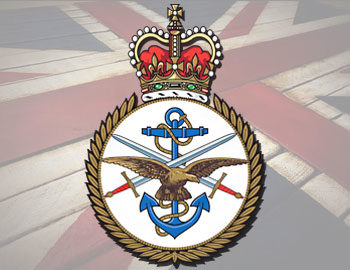

Welcome to our series of “Banknotes of the world”. Though banknotes by their very definition are a type of negotiable promissory note, made by a bank, payable to the bearer on demand, they are artistic treasures in their own right. All the countries are no doubt proud of their history and heritage and proudly boast about them on their currency notes. Currency notes and their designs and the reason behind their issuance are in itself a topic of great interest and study.
For our first part of the series, we are discussing the banknotes issued by the British Armed Forces.
After the end of the great World War II in 1945, France, Britain, the United States and Russia agreed at the Potsdam Conference to split Germany into four occupation zones. The British area was occupied by the 21st Army Group that was collectively known as the British Army of the Rhine (BAOR). The most challenging job that remained post-war was to reassemble Germany’s basic infrastructure and cope with a population on the brink of starvation.
To handle this, the BAOR that operated as a country within a country, required a monetary system that would function to serve the needs of the occupying forces. As the war had devastated the economy, a severely problematic black market trade and high inflation were plaguing the country.
To overcome existing and potential monetary problems and to cut down the risk of local government hostility, the military authorities were given permission to issue special “military currency”. This British Military currency was to function alongside the local currency issued by the local authorities.
The first series of notes was issued in 1946 and obviously has no series indication. The smallest denomination was 3 pence and the highest was 1 Pound. Later on, a second edition was made to replace this one. A total of 6 issues were released from BAF currency’s introduction in 1946 to 1972.
The introduction of the 6th Series was prompted because the United Kingdom had changed over to decimal currency. There were three denominations – five pence, ten pence and fifty pence. These new denominations had the words ‘New Pence’ to distinguish it from the pre-decimal pence. The sixth series, together with the 1 and 5-pound notes of the second series, was used in Berlin up to December 31, 1979, when they were finally withdrawn.
Let’s have a look at a few notes that were issued in the year 1962. The Note Specifications are as follows:
Issuing Country: United Kingdom
Denomination: 5 New Pence
Year of Issue: 1962
Obverse: Denominational value “5 P” is seen on all corners with a large one to the left with the words “6th series” over it. Value of the banknote “Five New Pence” is in the centre with “British Armed Forces” at the top. Texts “Issued By Command of the Defence Council” at the bottom with “Special Voucher” on the left and right borders.
Reverse: This blue, red, and green coloured note have the words “Five New Pence” is in the centre with denominational value “5 P” is seen on all corners with a large one in top right and bottom left corners. Complex lined patterned design.
Issuing Country: United Kingdom
Denomination: 10 New Pence
Year of Issue: 1962
Obverse: Denominational value “10 P” is seen on all corners with a large one to the left with the words “6th series” over it. Value of the banknote “Five New Pence” is in the centre with “British Armed Forces” at the top. Texts “Issued By Command of the Defence Council” at the bottom with “Special Voucher” on the left and right borders.
Reverse: Denominational value “10 P” is seen on all corners with a large one in the centre. Value of the banknote “Ten New Pence” is in the centre left and at the top. Complex lined patterned design.
Don’t these British Armed Forces banknotes have an interesting history? Collecting banknotes have been a hobby probably since the inception of paper money. Hobbies help to gain knowledge. Notaphily is such a hobby that will give you knowledge of numerous countries and their currencies.
Indeed instead of just spending the money, just for once let’s appreciate the beauty of their designs. There are so many more and we are very excited to explore such wonderful artworks. Stay with us and let’s enjoy this together.
The Mintage World Team comprises of experts, researchers and writers from the field of Philately, Notaphily and Numismatics who try to shed light on some of the most interesting aspects of coins, banknotes and stamps from not just India but across the globe as well.